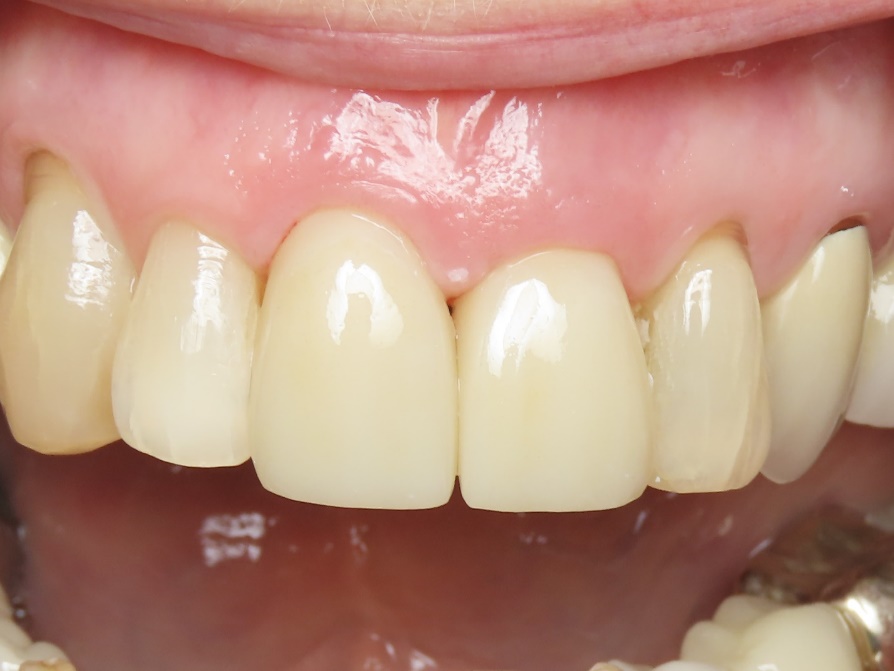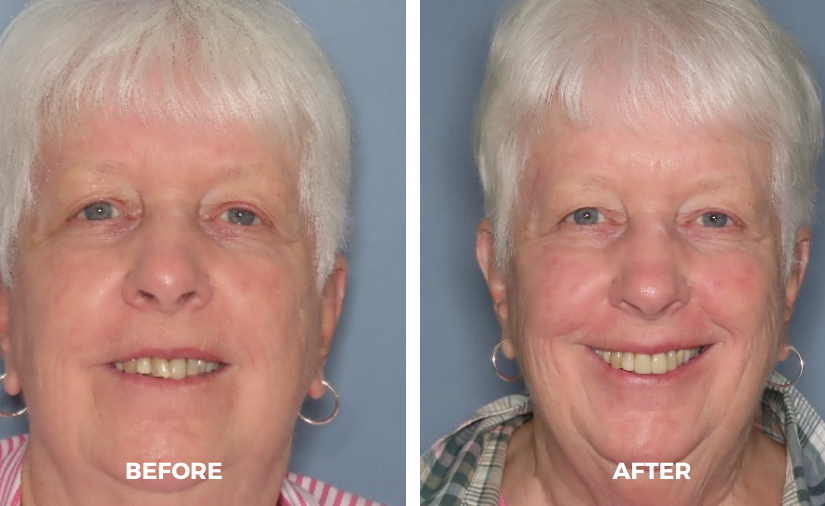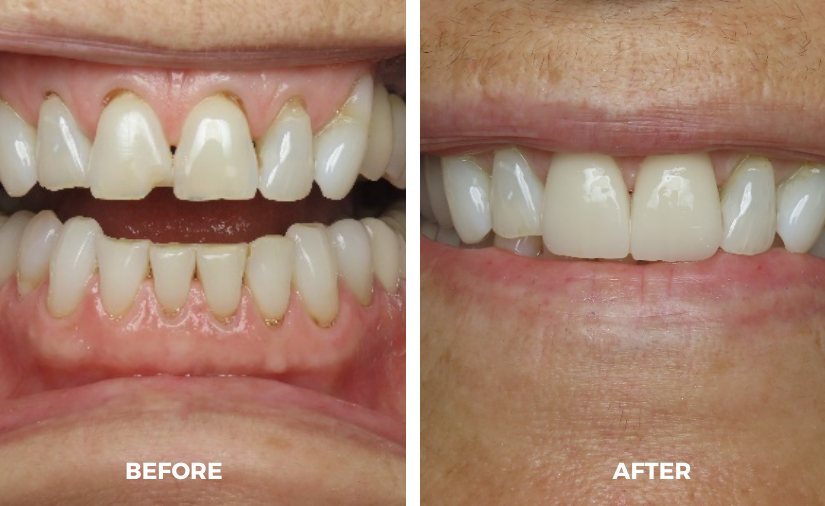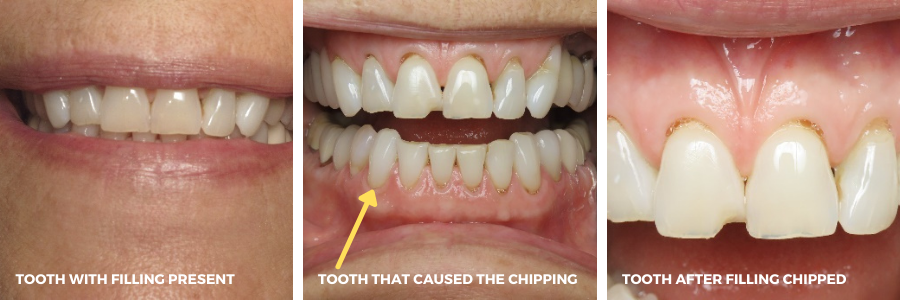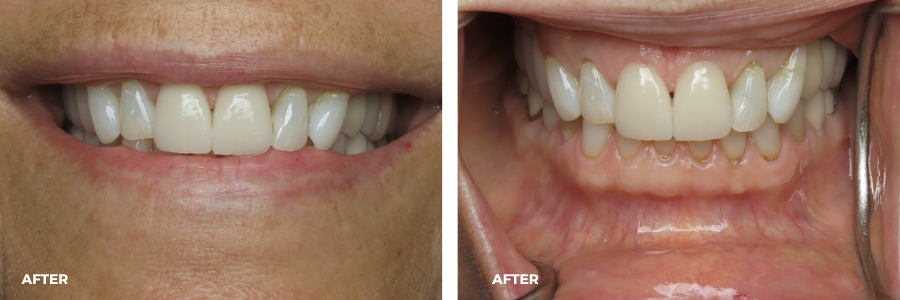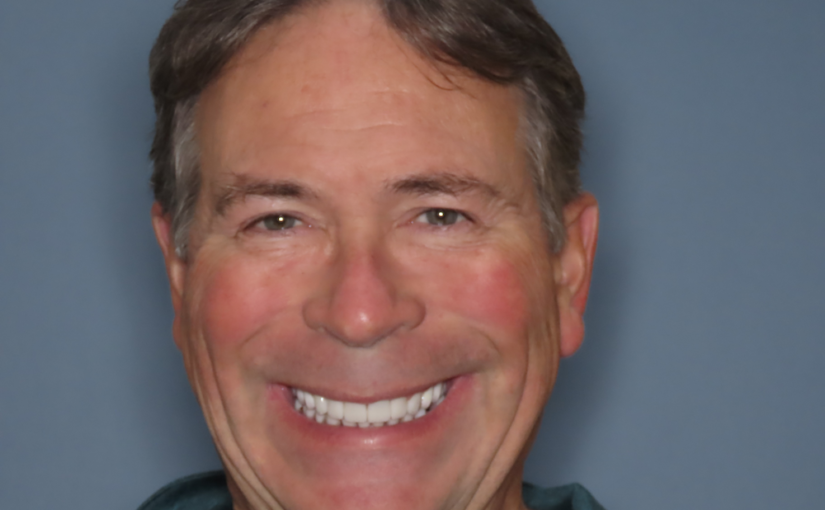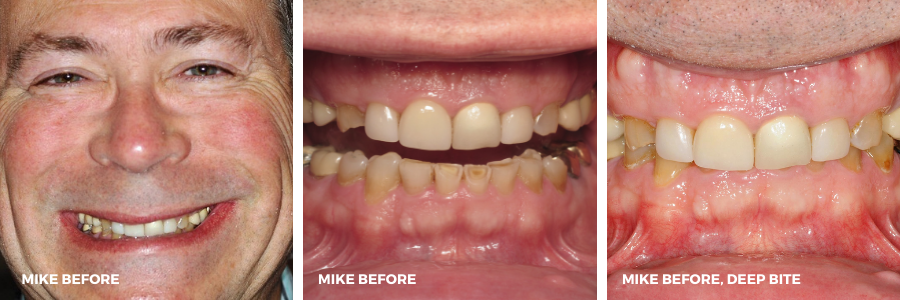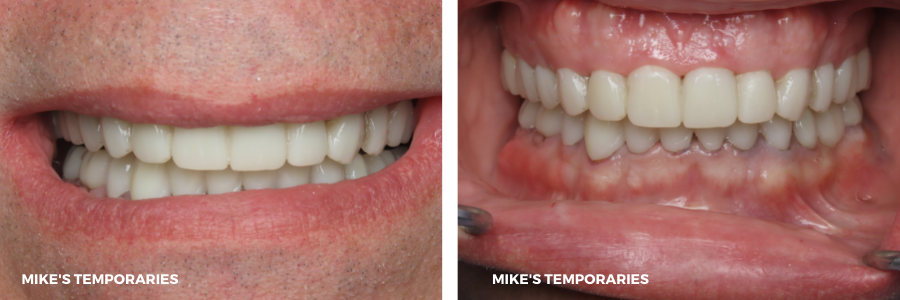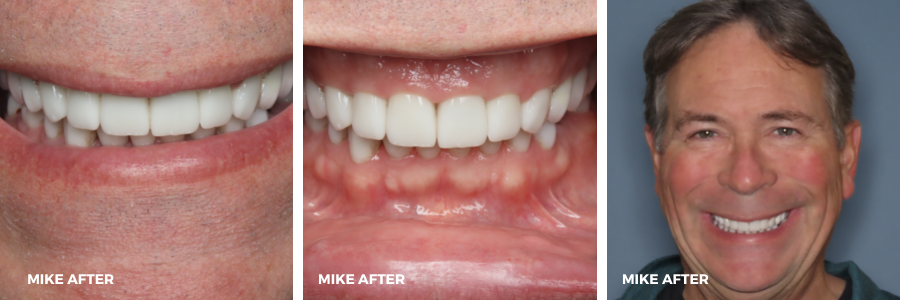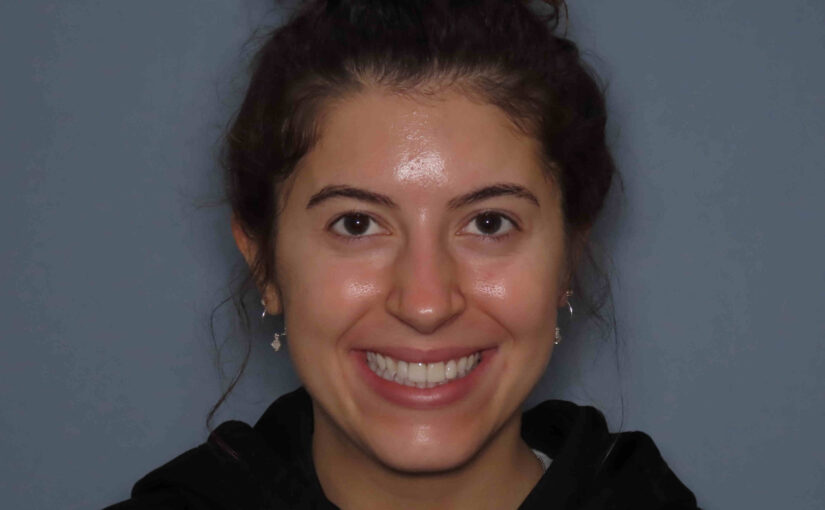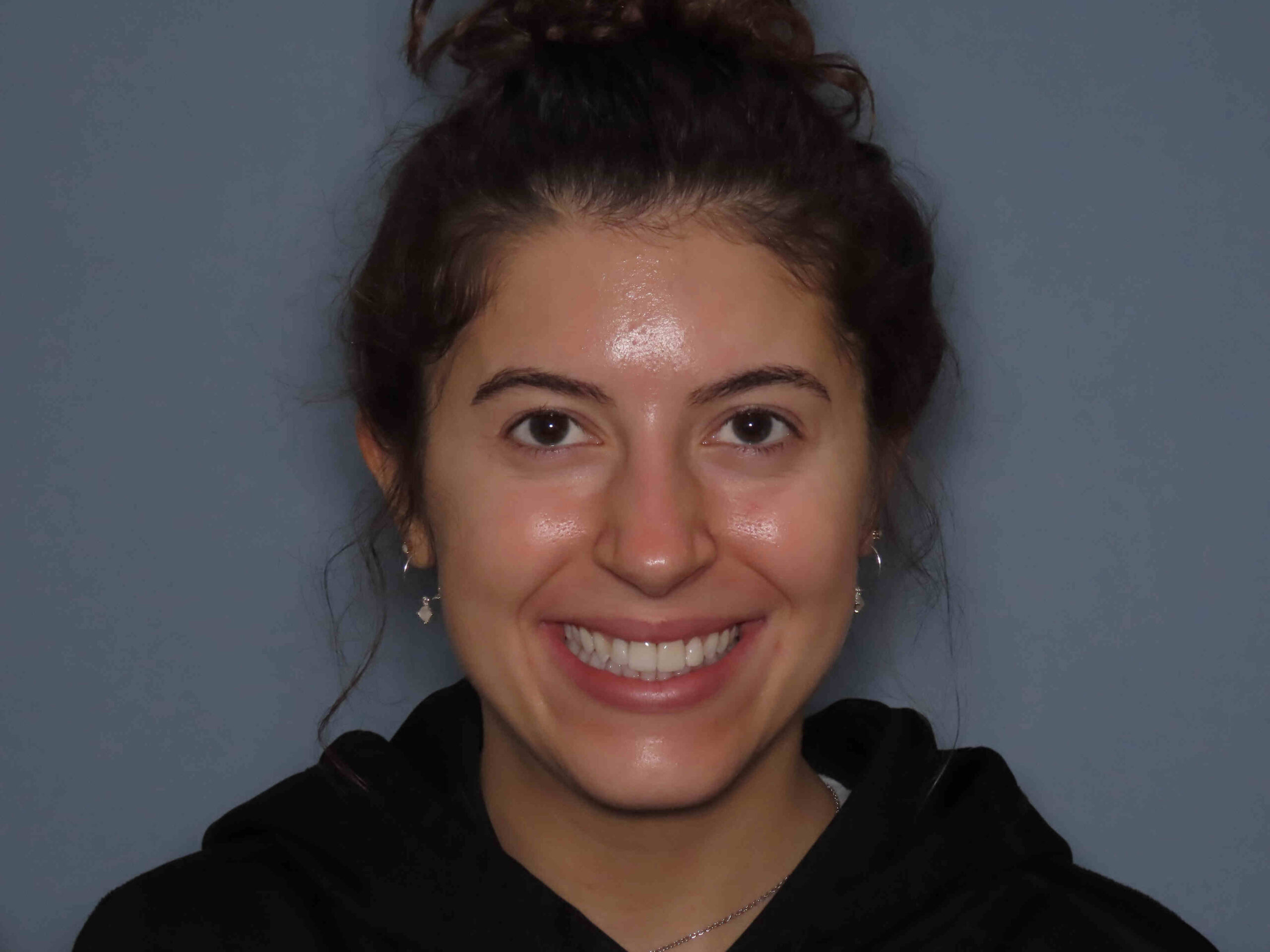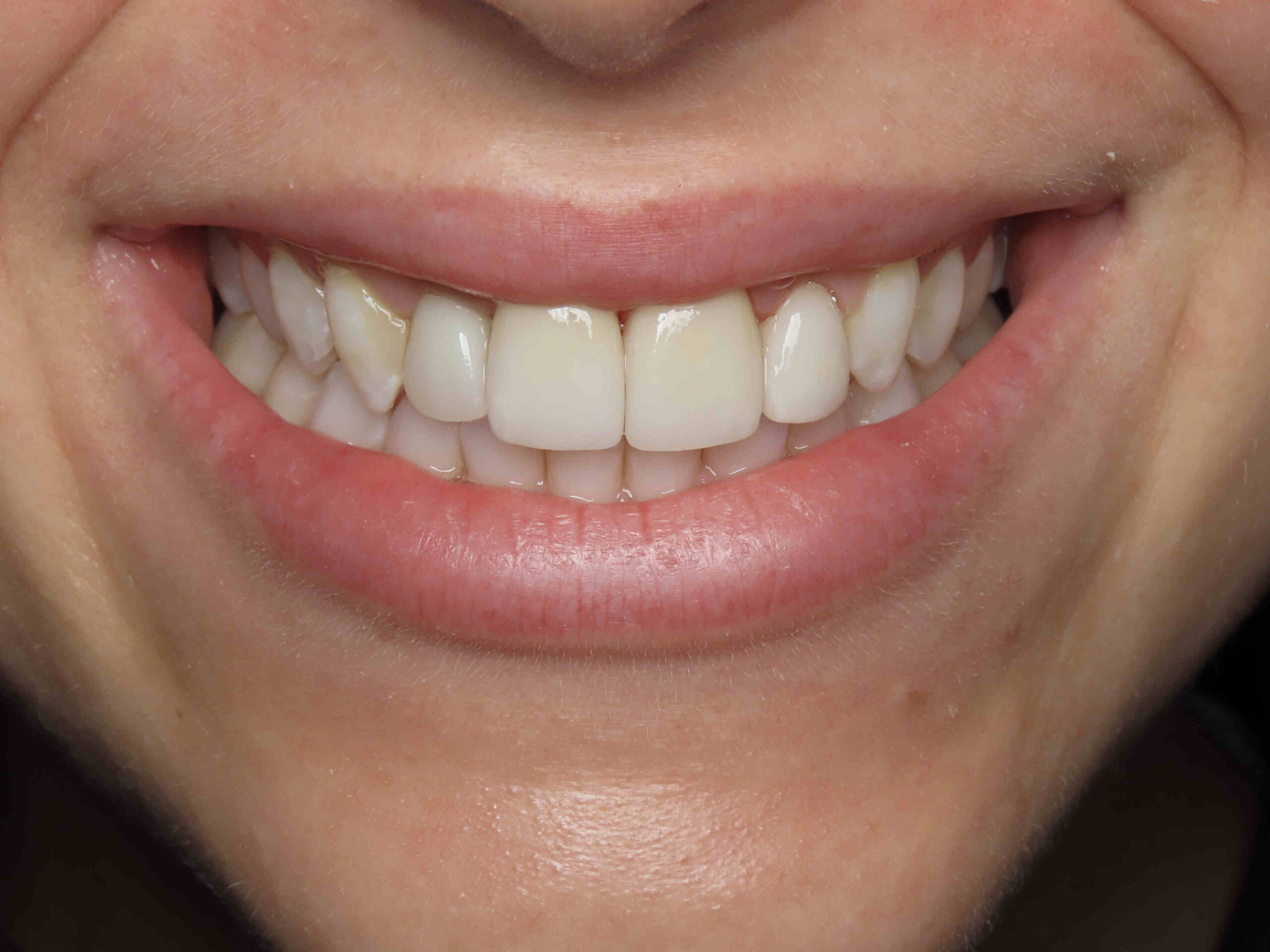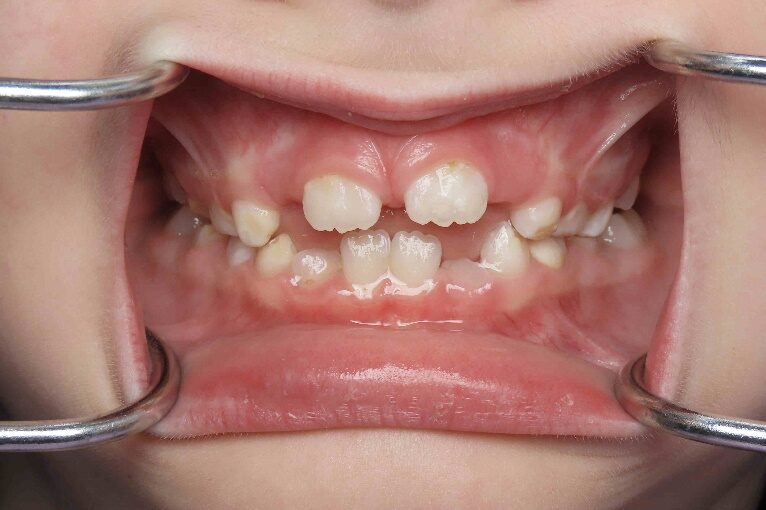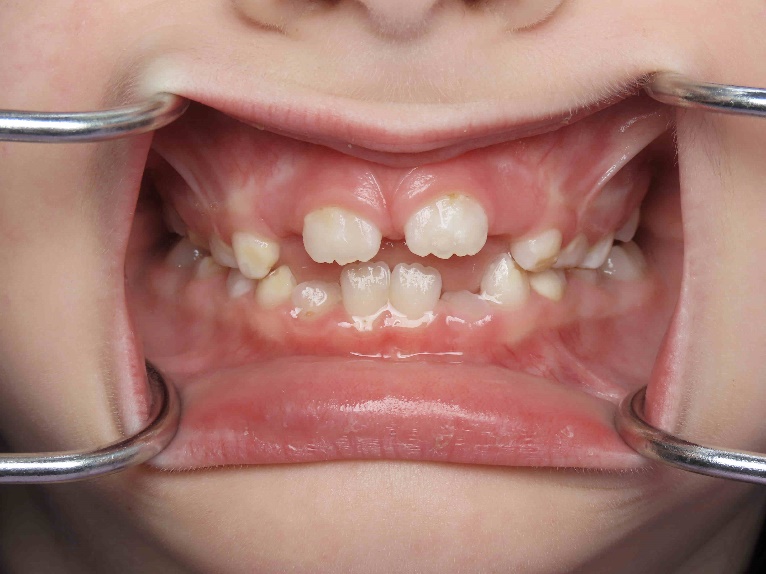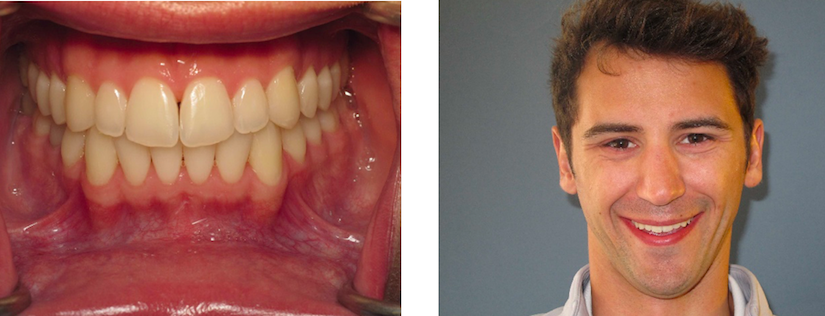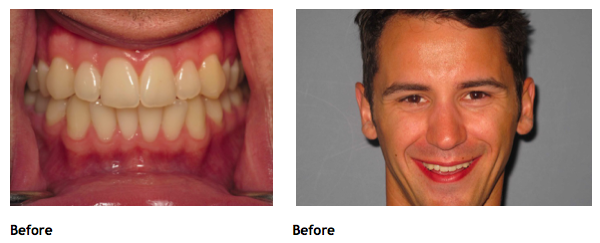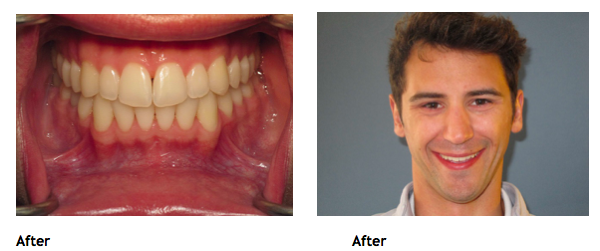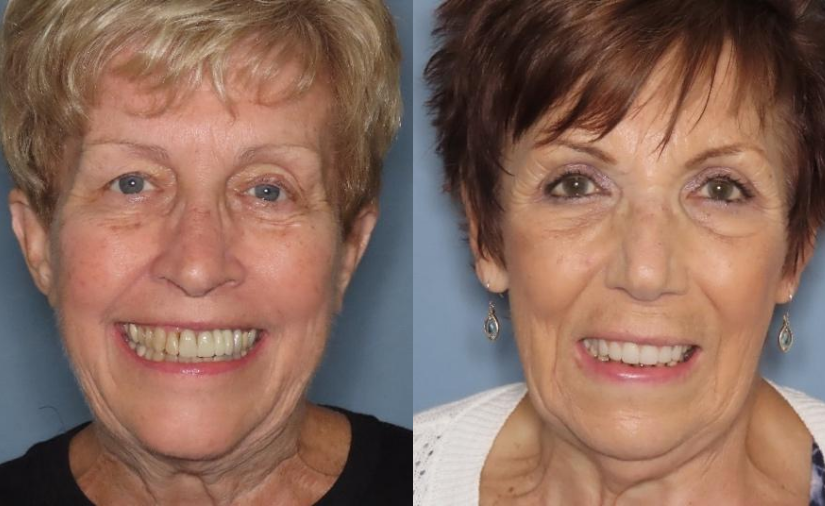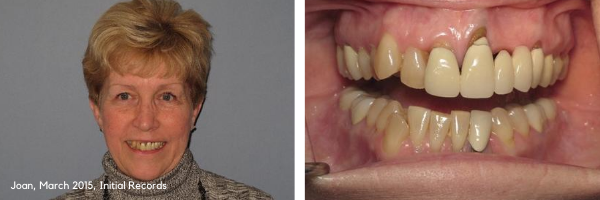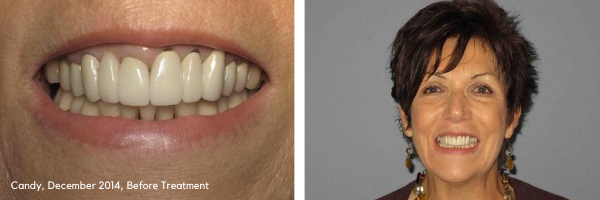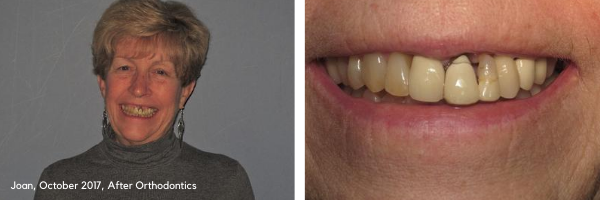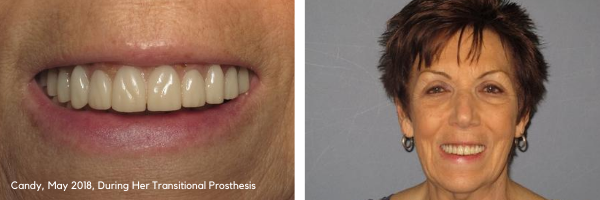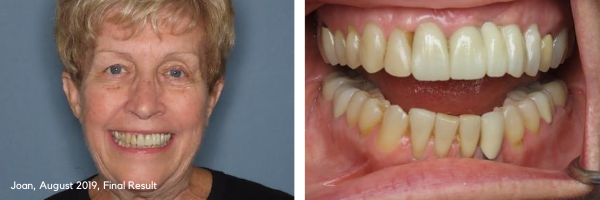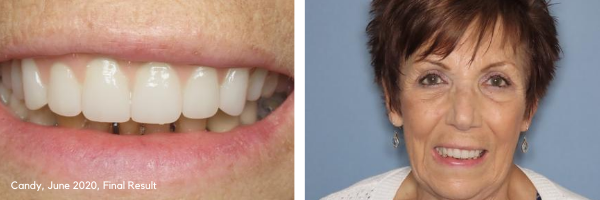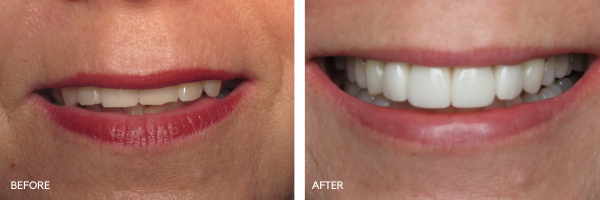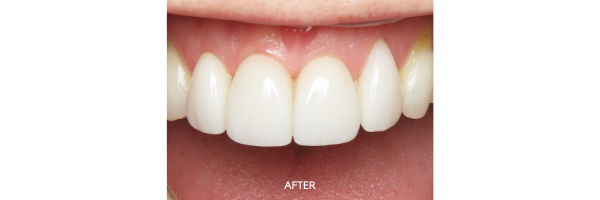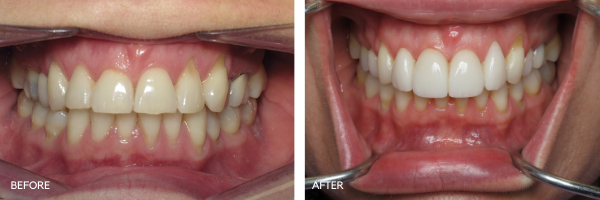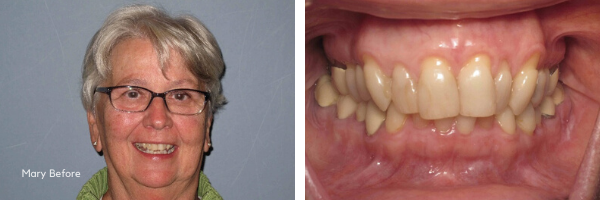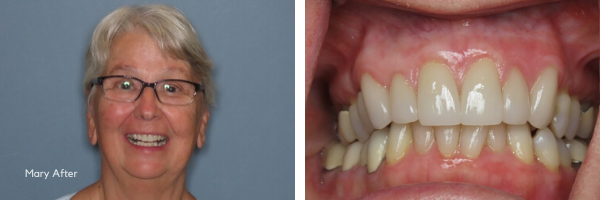By: Dr. Elizabeth Eggert
How did this start?
Gloria has been a patient of Dr. Elizabeth Eggert for over 15 years. She loves to smile and is the kind of person with a spectacular “twinkle in her eye!” Recently, at one of her recare visits, she wanted to talk about her overlapping teeth. She noticed that a large filling she had on one of her front teeth was loose. She wondered if it had come loose because it was at such an angle? She and Dr. Elizabeth talked about how the angulation of her right front tooth and the crowding of her lower front teeth, caused all her anterior teeth to work against each other in an unharmonious manner when she eats and talks. The existing filling was very large and was at the limit of how composite filling material can work when subjected to such heavy forces.
She and Dr. Elizabeth talked about moving to a stronger restorative material, like porcelain, and how if she was willing to work on changing both of her front teeth, the angulation could be improved to create the illusion of straighter teeth.
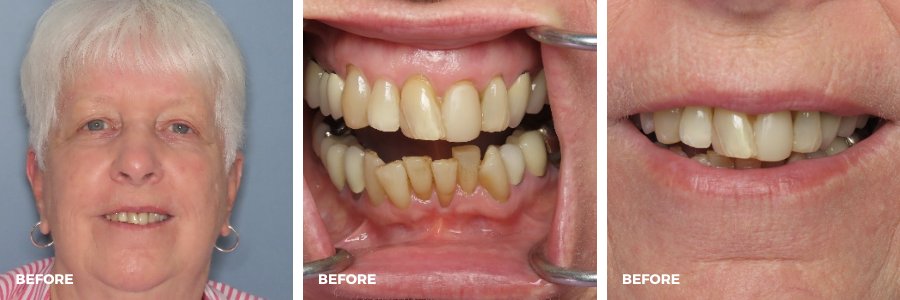
What was involved?
Gloria was interested in sticking to only working on the two front teeth. She understood that she had other options like orthodontics to move her teeth, but she figured doing only two full coverage porcelain crowns could help improve her smile enough for her satisfaction and could be done much more quickly than undergoing orthodontic treatment.
Gloria’s two front teeth were prepared for full coverage crowns. Dr. Elizabeth worked through a mock-up with her before hand to discuss her midline (center line between the two teeth), tooth size, shape, and symmetry. Gloria was so happy with the temporary crowns based on her mock-up, she commented “if the temporaries feel and look this great, I am so excited to see how the final crowns will be.”
After the two weeks it took to get her crowns back from the dental laboratory, Gloria’s crowns were tried in her mouth. Before cementing the crowns, Gloria looked in the mirror and with an enormous smile, exclaimed, “I like these a lot. The color is perfect and they look really good on me.”
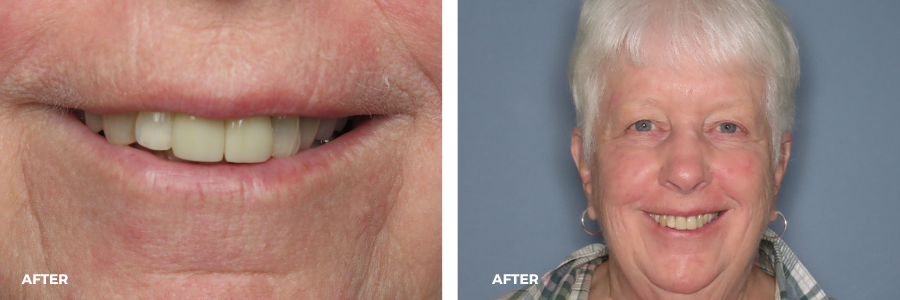
What does Gloria think?
In her final interview, Gloria was asked how she had made the decision to crown her two front teeth? She responded, “My front tooth, the right one, had a huge filling that was too big to stay put. Dr. Elizabeth helped me understand better options for that tooth. After thinking it over, I knew that my other front tooth, the left one, would eventually need a crown too, so having them done at the same time AND being able to change how crowded they looked really appealed to me. It really sounded like a great idea. I was also excited that the color could be evened out with my other teeth. I always thought that right front tooth looked too dark.”
Overall, Gloria is really happy about the outcome of her treatment and would recommend to others considering this procedure to “just do it.” “It was such a successful treatment for me, and I would love for others to experience such great results.”
One thing Gloria would like to pass along about getting crowns done with Eggert Family Dentistry is “Don’t worry about it, trust the process and Dr. Eggert because the results are wonderful.”
Gloria’s story is just one of many others who have also experienced magnificent results with Dr. Eggert. Crowns can yield beautiful and predictable results for accomplishing an improved smile. At Eggert Family Dentistry, we love providing Dentistry for a Lifetime of Smiles – thanks Gloria for trusting us to help you continue to smile big and confidently!
